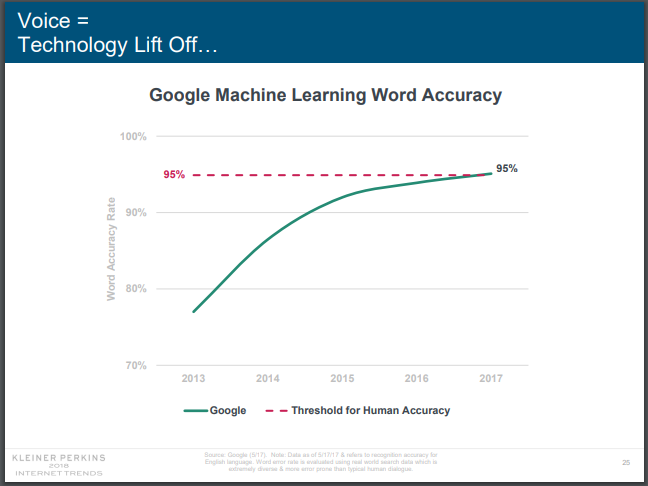A confession: my navigation skills are abysmal. I’ve been known to get lost in car parks and Mario Cart. But, since downloading Google Maps a few years ago, I’m rarely lost (for long) these days. I’ve used a cheap technology to compensate for a skill gap that really bugs me.
In the same way, text-to-speech and read-along software tools are being used in many homes and schools to help students and others with reading comprehension difficulties.
Are they a good idea? As with many tricky questions, the answer is that “it depends”.
What do text-to-speech tools do?
Software, such as Classmate Reader or Texthelp Read&Write, can ‘translate’ written text into spoken words, enabling you to listen to text while reading along, or simply to listen.
The idea itself isn’t new: we’ve had audiobook tapes and CDs, for several decades, for example. But recent, major improvements in voice recognition software – including some of the technologies underpinning Artificial Intelligence-enabled tools and apps aligned with products and assistants like Google Cloud Text to Speech, Google Assistant, Siri, Alexa, and Cortana to name a few – are making text-to-speech (and voice-to-text) tools much more accessible and potentially much more useful and socially accepted than in the past.
Remember that reading comprehension problems are not all the same
We’ve written at length about reading comprehension difficulties. To recap the most relevant points:
- Reading comprehension difficulties are caused by two main things:
- difficulty ‘decoding’ (or translating) written letters, words and sentences into speech sounds and spoken words and sentences; and/or
- difficulty understanding the language used in written texts (e.g. the vocabulary, sentence structures, or inferences to be drawn in a particular reading task).
- Some people experience only one of these problems, i.e. decoding problems or language disorders. Others have difficulties with both. The “Simple View of Reading” implies that:
- when decoding skills are poor, they limit reading comprehension; and
- when decoding skills are stronger, language comprehension becomes a more important influence on reading comprehension.
- “Dyslexia” or “specific learning disorders with impairments in reading” are both normally used to describe children with significant decoding issues. Poor reading accuracy and rate has a direct negative effect on reading comprehension and may leave fewer cognitive ‘resources’ free to try to figure out the meaning of texts (e.g. Smythe, 2005). Even fairly small gains in decoding skills for poor readers can have big positive effects on reading comprehension (Lervåg, 2017).
- During the school years, oral language comprehension and reading skills ‘piggy back’ on each other (Snow, 2016). People with decoding problems may have problems learning new words and higher level language skills, which can then hamper their oral language development. Poor decoding skills can drag down higher level language skills that students learn as they read to learn.
Why are text-to-speech tools potentially helpful
Text-to-speech tools remove the need to decode reading material. This helps people with decoding issues understand the material. For example, ‘read aloud’ tools might help students who have decoding problems complete assessment tasks at school (much like human readers in exams help many students with reading difficulties).
Text-to-speech and voice-to-text tools are no longer fringe technologies
Voice-to-text and text-to-speech software used to be hampered by poor accuracy, poor voice selections, and poor speech naturalness.
Now have a look at this amazing chart:

In 2018, Google’s machine learning word accuracy rates exceeded 95% for the first time. Some of their competitors are not far behind. Many of these technologies now sit nested in home and electronic devices: tools like Amazon’s Alexa or Apple’s Siri. Increasingly, I’m writing notes and even blogs using Google voice-to-text, plugged into apps with voice-to-text features like Evernote or Google Docs.
These technologies can also be used the other way around to read text using artificial voices (or even clones of your own voice): artificial intelligence-driven voice technologies like those developed by Lyrebird, Baidu and Mozilla and Google’s DeepMind are coming along in leaps and bounds. It’s an exciting time to be involved in communication science!
Back to the current state of play: hat does the peer reviewed research evidence say?
The research base lags the use of text-to-speech tools, and is far from cohesive at this point. There are a few reasons for this, including:
- the fast rate of technology advances;
- different research goals: some studies look at text-to-speech tools as a way of compensating for decoding issues; and other studies look at text-to-speech tools as a way of improving decoding skills. (The goal of compensation is to help students access texts they would otherwise not be able to read because of decoding problems. The goal of treatment is to improve decoding skills.);
- the number of different commercial programs available, including:
- the number of different features that can be manipulated in differences services, including reading rate, voice type, document tagging, dynamic highlighting;
- the different populations of people that researchers have looked at, e.g. people with unspecified disabilities, reading disabilities, ADHD, autism spectrum disorder and many other disabilities; and
- the different outcome measure used in different studies to measure effects.
In 2014, two meta-analyses were published on the compensatory effects of read-aloud accommodations on assessments:
- Li (2014) looked at the effects of read-aloud accommodations on reading and maths assessments, comparing their effects on children with and without disabilities (broadly defined and not restricted to children with reading difficulties alone). Li found positive effects for both groups on reading and maths tasks, but smaller effects for maths.
- Buzik & Stone (2014) looked at the effects of read-aloud accommodations for students with and without disabilities on standardised assessments. Again, read-aloud accommodations helped both groups with reading and maths tests, with smaller effects for maths.
In 2018, Dr Sarah Wood and colleagues from Florida State University published a more focused meta-analysis of 22 studies on the effects of text-to-speech technologies on reading comprehension for students with reading difficulties (see citation below). They found that text-to-speech technologies may assist students with reading comprehension. However, as noted by the authors, the findings were limited by the small number of studies on the issue to date, the diversity of the tools and measures, the lack of detail in many studies about appropriate dosage, and the lack of controls for placebo effects and bias.
Clinical bottom line
For children with reading comprehension problems caused by decoding issues, text-to-speech tools may help children to understand texts that they otherwise wouldn’t be able to read. The evidence is not clear for children with good decoding skills and poor language comprehension skills. We don’t yet know exactly how or why text-to-speech tools help some children. But students with normal oral language comprehension are likely to benefit from having the text read to them when decoding is the bottleneck.
When advising parents and students about text-to-speech tools, teachers, speech pathologists, education psychologists and others involved in helping students with reading difficulties should think hard about:
- the main factor(s) contributing to the student’s reading difficulties – decoding, language comprehension, or both;
- the goal(s) of using the tool – i.e. is it to compensate for a student’s reading difficulties (e.g. in an assessment), or is it intended to help improve reading skills? (and if so, how?);
- the positive functional impact using the tool might have on the student’s participation in class and access to the curriculum; and
- whether the time spent using the tool might better be spent working on improving decoding skills through explicit synthetic phonics instruction, which has a higher level of evidence at this point. Just as a physiotherapist might temporarily tie up a patient’s “good arm” to encourage her to use and rehabilitate her injured arm, might we be better off in some cases working directly on decoding skills and turning off tools that might enable the patient to avoid using them.
Fundamentally, we all want people we care about to succeed and participate at school, work and in life. And let’s be honest. As these technologies become more mainstream, people with reading difficulties will no doubt turn to their smart phones and other devices to help them to understand what they’re reading – regardless of what experts may think about the merits and evidence base.
In exactly the same way that I turn to Google Maps to find a destination.
Important note: We do not have any commercial relationships with any of the text-to-speech products or services referred to in this article, and make no recommendations about them. They are provided as examples only.
Related articles:
- “I don’t understand what I’m reading!” – reading comprehension problems (and what to do about them)
- Is your child struggling to read? Here’s what works
- How to help your school-age child learn new words – the nuts and bolts of how I actually do it in therapy
- 6 strategies to improve your child’s reading comprehension and how to put them into practice
- Kick-start your child’s reading with speech sound knowledge (phonological awareness)
- The forgotten reading skills: fluency, and why it matters
- Speaking for themselves: why I choose ambitious goals to help young children put words together
- How to find out if your child has a reading problem (and how to choose the right treatment approach)
- Help your child to fill in the gaps, join the dots, and read between the lines! (Improve inferencing skills for better reading and language comprehension)
- 24 practical ways to help school-aged children cope with language and reading problems at school and home
Principal source: Wood, S.G., Moxley, J.M. Tighe, E. & Wagner, R. (2018). Does Use of Text-to-Speech and Related Read-Aloud Tools Improve Reading Comprehension with Reading Disabilities? A Meta-Analysis. Journal of Learning Disabilities, 51(1), 73-84.
Image: https://tinyurl.com/y2fvujsk

Hi there, I’m David Kinnane.
Principal Speech Pathologist, Banter Speech & Language
Our talented team of certified practising speech pathologists provide unhurried, personalised and evidence-based speech pathology care to children and adults in the Inner West of Sydney and beyond, both in our clinic and via telehealth.

